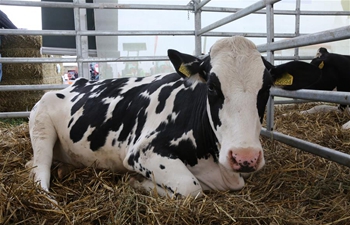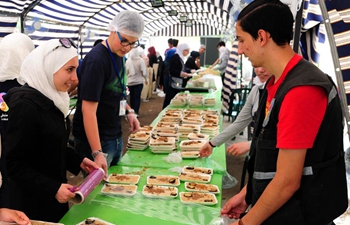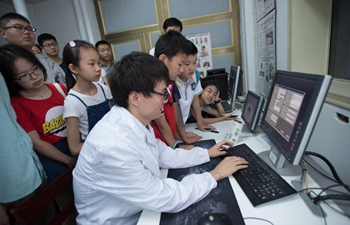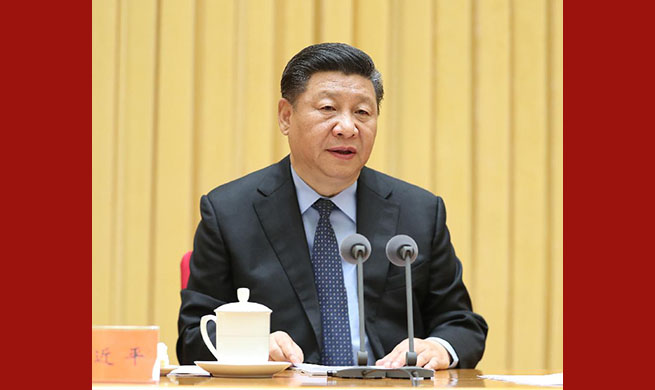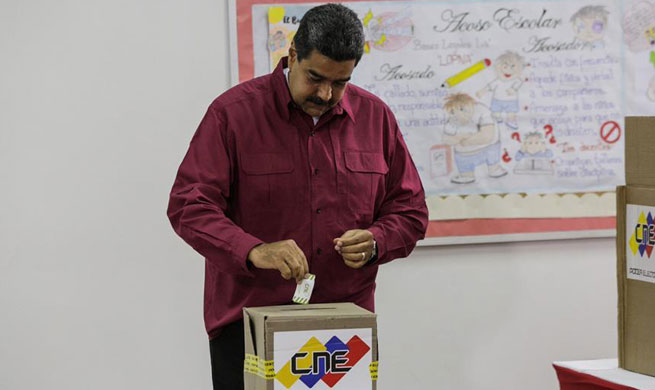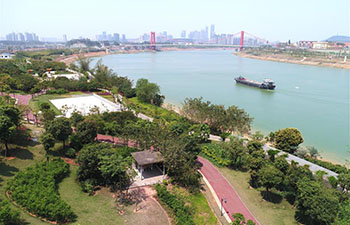TAIYUAN, May 21 (Xinhua) -- Tan Kejian, 63, still keeps some old paper documents, even though they have expired. He says they are a symbol of history.
After his daughter was born in 1982, Tan filled out an application form to voluntarily have only one child in Pinglu County of north China's Shanxi Province,
"Bearing the concerns of the country, I promise to have only one child," he wrote in the application.
China lifted its one-child policy in 2016, allowing each family to have two children. The policy was originally enacted around 1980 to cope with increasing population pressure.
This year marks the 40th anniversary of China's reform and opening-up drive. Over the past four decades, a lot of paperwork, documents and certificates have faded into history, turning quotidian items into collectables.
With the one-child certificate, Tan's family could receive an allowance of five yuan every month, one-sixth of the monthly income back then.
"Had we been allowed to have more children, our meager income could not possibly have afforded them," Tan said, adding that his stepfather had to borrow grain occasionally to make ends meet.
By 2017, the annual per capita disposable income in urban China had reached 36,396 yuan (5,712 U.S. dollars), compared to only 477 yuan in 1980.
Ration coupons are also among the obsolete scraps of paper that show how much China has changed over the past 40 years. The government used to issue food ration coupons to meet basic living requirements and tackle food shortages.
Wang Jianzhang, 66, keeps a set of food ration coupons, which remind him of the days of hunger.
"The coupons were allocated based on people's ages and their jobs. One had to use both cash and food coupons to buy a meal," he recalled.
Wang was born to a family of workers in Shanxi. Frequent starvation during childhood has left him with stomach ailments.
Coupons were needed for many necessities and household items. Wang bought his family's first color television set in 1986, when they finally attained a coupon.
"The TV set cost me an entire year's income," he said.
Following the reform and opening up, the market economy has gradually replaced the planned economy, phasing out the ration coupons in 1993 after 38 years of use.
The coupons are popular among collectors. A set of food coupons from the 1950s and 1960s is worth more than 10,000 yuan, according to Zeng Bo of the China Association of Collectors.
Rural people were among the first to benefit from China's reforms. Farmland tracts were contracted to households in the late 1970s, and since then, farmers have been able to support themselves with their farming yields.
The government exempted agricultural taxes in 2006, annulling farming tax certificates and ending China's 2,000-year-old practice of rendering grain to the state. Instead, farmers now enjoy an agricultural allowance.
Wang Erluo, from Shanxi's Kelan County, said they had to pay 63 yuan in farming taxes and other fees every year in the 1980s, taking nearly a quarter of the family income. Now, the family receives an annual subsidy of between 900 yuan and 2,000 yuan as the government encourages growing high-yield crops.
While some papers have perished, new documents have emerged in recent years as signs of people's improved well-being.
Wang, a poor farmer and veteran, has been granted a certificate to receive the minimum living standard allowance, a medical insurance certificate for rural people, as well as a veteran certificate, which allows him to receive a pension.
With the certificates, Wang's medical bills are covered, and the family is granted nearly 15,000 yuan in allowance a year.
"Life has really changed greatly, especially over the past 10 years," he said.




